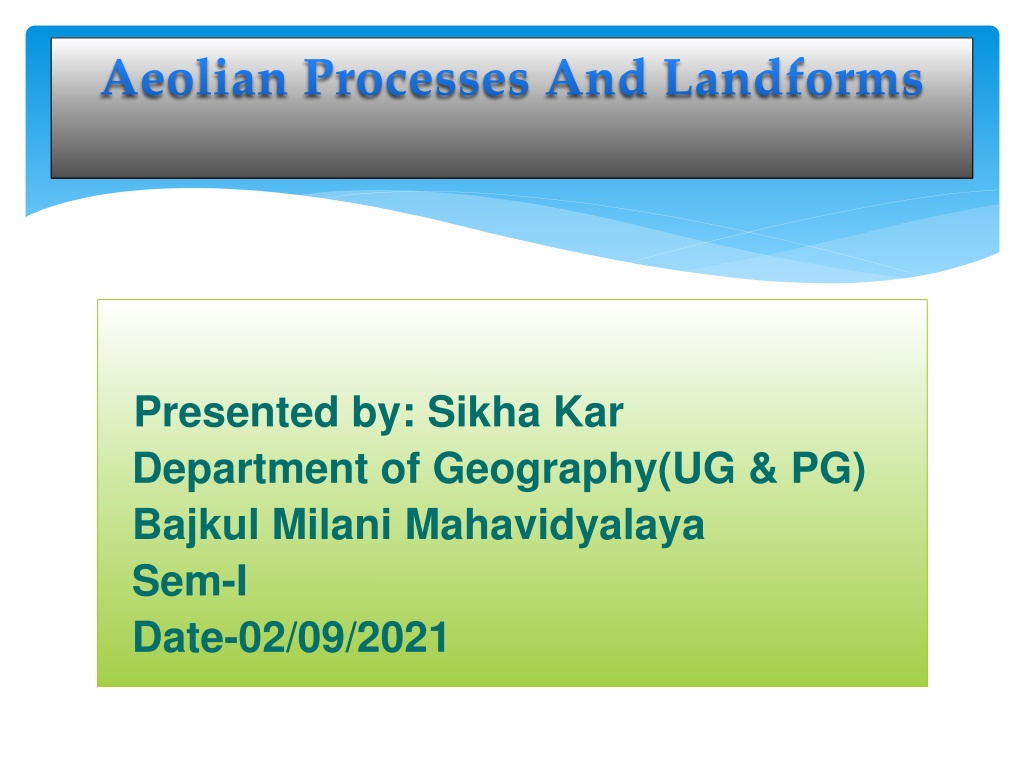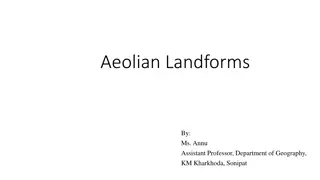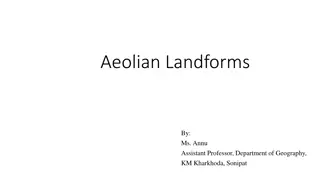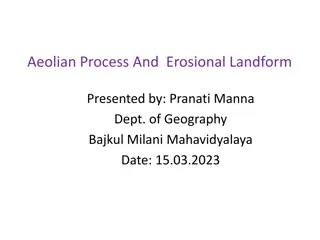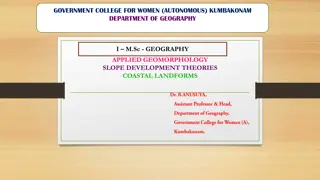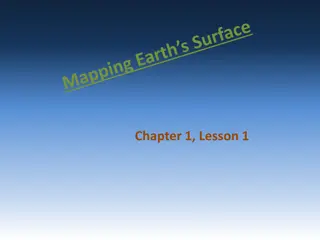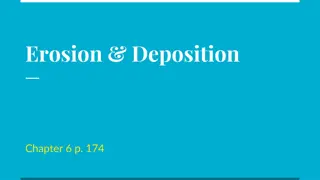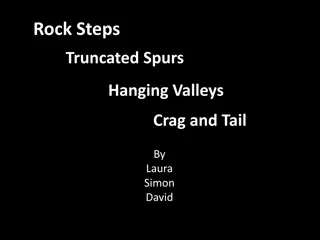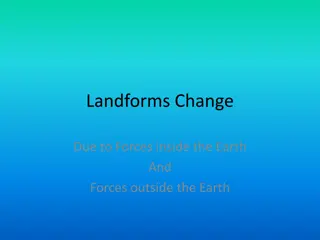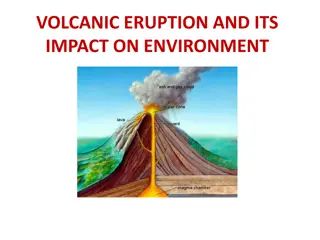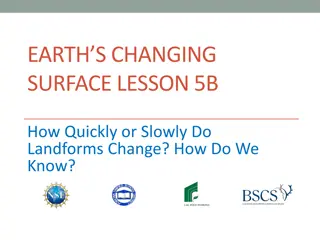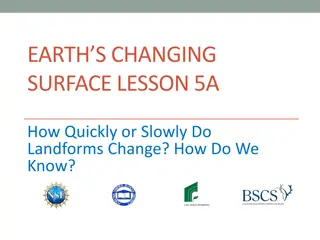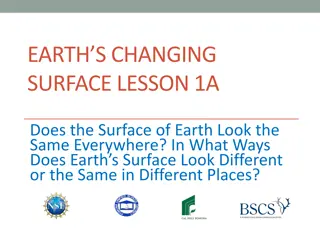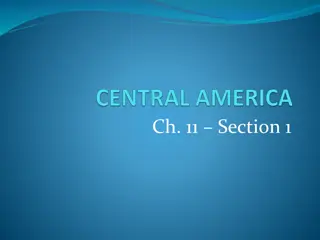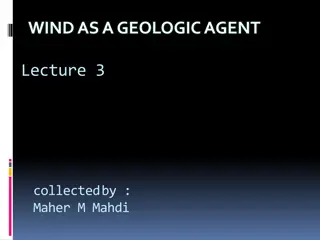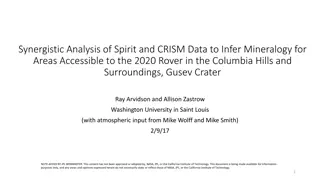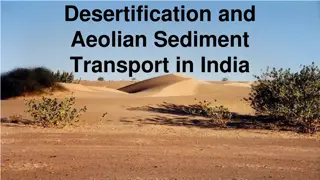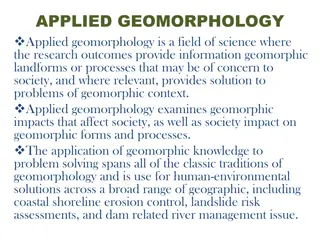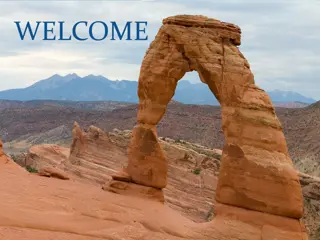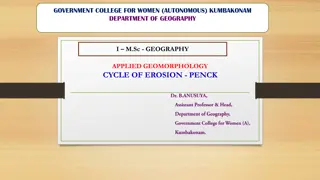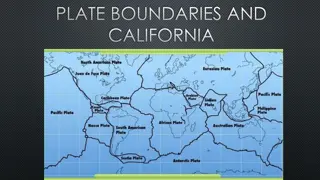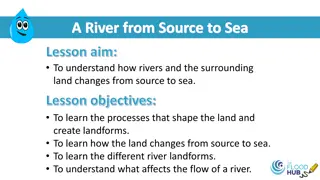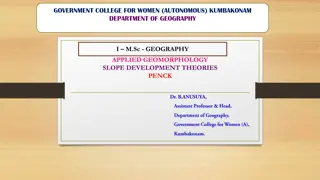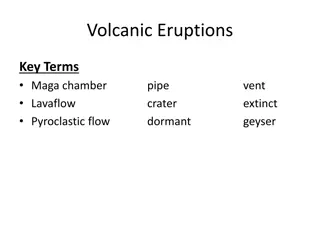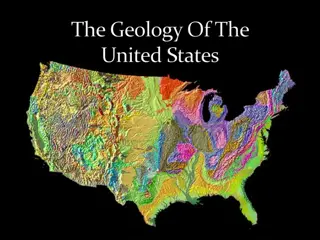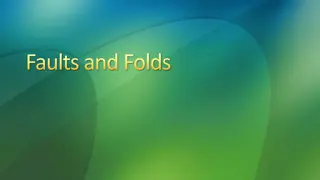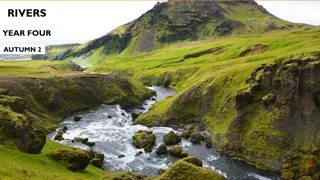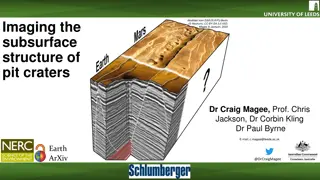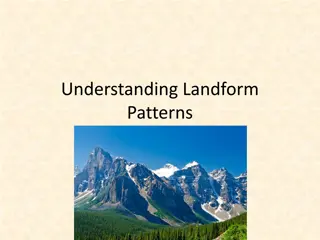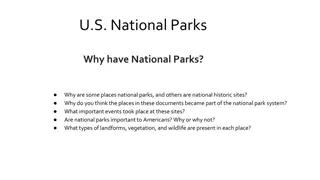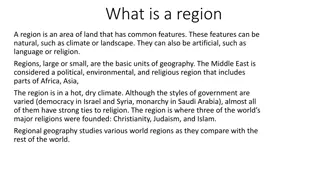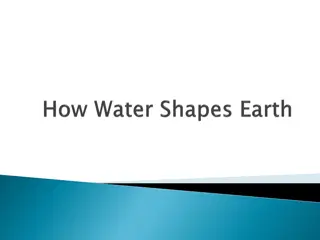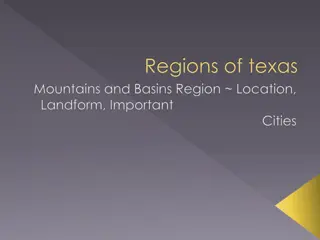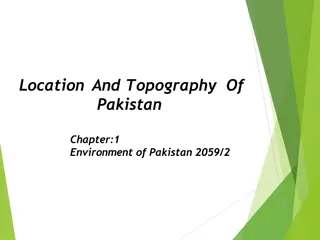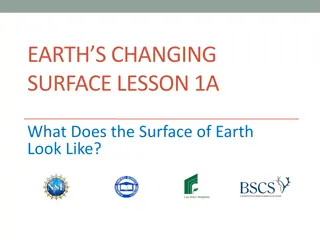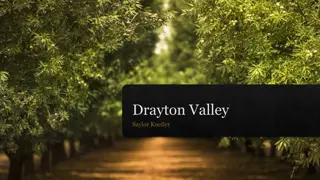Understanding Aeolian Processes and Landforms
Aeolian processes are crucial in arid and semi-arid regions, involving erosion, transportation, and deposition by wind. Factors like wind velocity, grain size, rock composition, and vegetation influence erosion. Different types of wind erosion include deflation, abrasion, and attrition. The transportation processes include suspension, saltation, and surface creep. Deposition occurs when wind speed decreases, leading to the settling of sediments. Aeolian landforms, shaped by wind actions, consist of well-rounded sediment particles deposited in regions where wind is a dominant geomorphic force.
Download Presentation

Please find below an Image/Link to download the presentation.
The content on the website is provided AS IS for your information and personal use only. It may not be sold, licensed, or shared on other websites without obtaining consent from the author. Download presentation by click this link. If you encounter any issues during the download, it is possible that the publisher has removed the file from their server.
E N D
Presentation Transcript
Aeolian Processes And Landforms Presented by: Sikha Kar Department of Geography(UG & PG) Bajkul Milani Mahavidyalaya Sem-I Date-02/09/2021
CONTENTS 1. INTRODUCTION 2. AEOLIAN PROCESSES EROSION TRANSPORTATION DEPOSITION 3. AEOLIAN LANDFORMS EROSIONAL LANDFORMS 4. CONCLUSION 5. REFERENCE
INTRODUCION *AEOLUS is the Greek God of wind *Eolian processes include erosion, transportation and deposition activities of wind *Eolian processes are important in arid and semi arid regions of tropical and temperate environments *Recent investigations have shown that even in the deserts running water is a potent geomorphic agent
AEOLIAN PROCESSES Erosion Factors affecting wind erosion *Wind Velocity: Massive wind erosion with a significant increase in wind speed *Nature and amount of materials/ the size of the grain: larger grains resist erosion by virtue of their greater size *Composition of rocks *Nature of vegetation
Wind erosion occurs in three ways: * DEFLATION * ABRASION OR SANDBLASTING * ATTRITION
TRANSPORTATIONAL PROCESSES 1. Suspension 2. Saltation 3. Surface creep or Traction
DEPOSITIONAL PROCESSES *Deposition of sediments occurs due to: -marked reduction in wind speed -obstructions caused by bushes, forests, marshes and swamps, lakes, big river, walls, etc *Deposition takes place with a sorting action (larger particles drop first due to reduced wind velocity) *Wind-deposited sand bodies occur as sand sheets, ripples and dunes
AEOLIAN LANDFORMS ~Features of the earth s surface produced by either erosive or constructive action of the wind. ~Found in regions of the earth where erosion and deposition by wind are the dominant geomorphic forces shaping the face of the landscape. ~Aeolian sediments are often composed of well-rounded, sand to silt sized particles that are weathered by wind abrasion during transport. ~Sediments are deposited when the velocity of the wind falls.
EROSIONAL LANDFORMS A)Ventifacts: ~Formed by abrasion effect. ~Exhibit one or more polished and faceted surfaces. ~They are relatively rare.
B) Yardang: Ridges that are sculpted And streamlined by wind abrasion and deflation. Elongated in the direction of prevailing wind and are nearly always carved from relatively weak materials.
C)Mushroom table or pedestal rock: A rock having broad upper and narrow base resembling an mushroom shape is called mushroom rocks, formed due to abrasive work of wind.
D)Desert pavements or lag deposits: The left behind closely packed, interlocking, angular or rounded rock fragments of pebble and cobble by wind deflation are known as lag deposits. A desert pavement is also called reg in western Sahara, Serir in Eastern Sahara, Gibber in Australia and Sai in Central Asia.
E) Blowouts: Sandy depressions in a sand dune ecosystem caused by the removal of sediments by wind. Blowouts develop in areas where non-indurated materials lie beneath the land surface.
F)Inselberg: An inselberg is a hill of hard volcanic rock that has resisted wind and weather and remained strong and tall as the land around it eroded away
G)Zeugen: Zeugen are tabular masses which have a layer of soft rocks lying beneath a surface layer of more resistant rocks. Difference in erosional effect of the wind on soft & resistant rock surfaces, carve them into weird looking ridge & furrow landscape.
H) Wind bridges and windows: Continuous erosion by high velocity winds forms holes in the rocks. Such holes are called Wind Windows. Further, the combined action of deflation and abrasion makes the wind windows larger and wider which assumes an arch like shape with solid roof over them. Such land forms are called Wind Bridges.
CONCLUSION Wind may erode, transport and deposit materials and are effective agents in regions with sparse vegetations. Deflation and abrasion are the two methods by which wind carries out its erosional activities on the earth s surface. Mushroom table, pedestal rock, yardang, ventifacts are important erosional features. Wind transportation takes place through suspension, saltation and creeping.
REFERENCE William D. Thornbury, Principles of Geomorphology, New age international publishers, (2002) Pp 34-37,288-300. G.B.Mahapatra; A text book of Geology Reprint (2011) Pp 58-62 Websites: wikipedia.org/wiki/aeolian processes u/weppdocs/overview/wndersn.html http://revisiopn world.co.uk/a2-level-level-revision www.physicalgeography.net/fundamentals/10ah.ht ml
